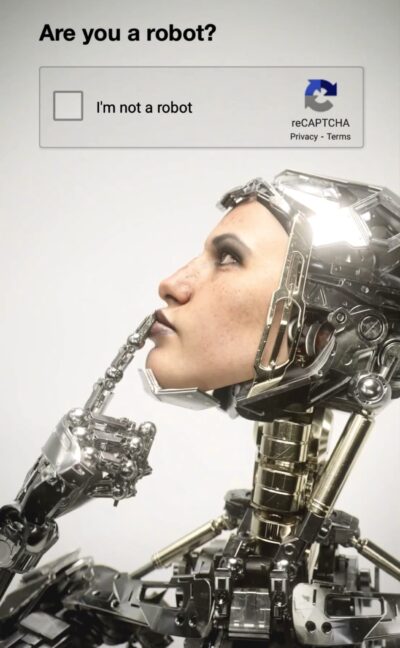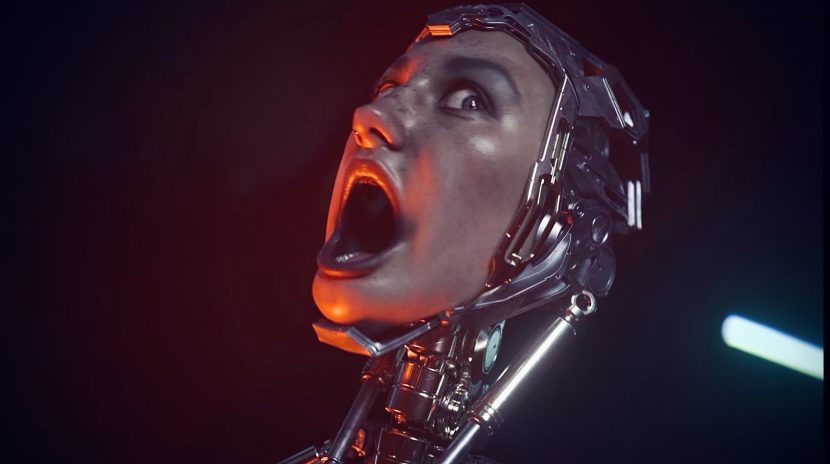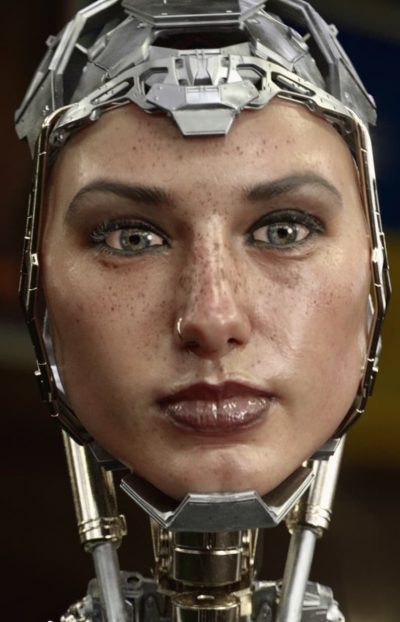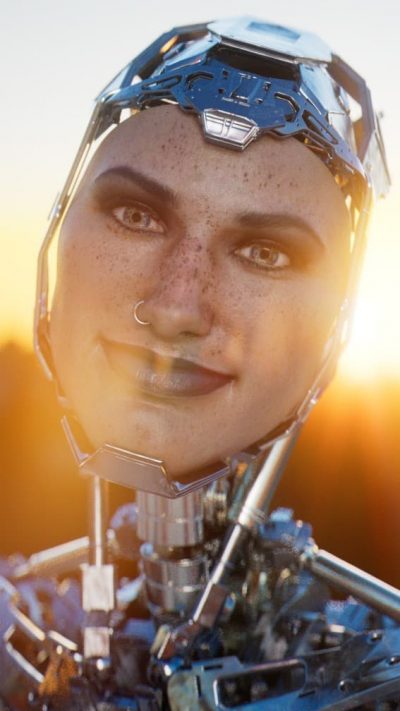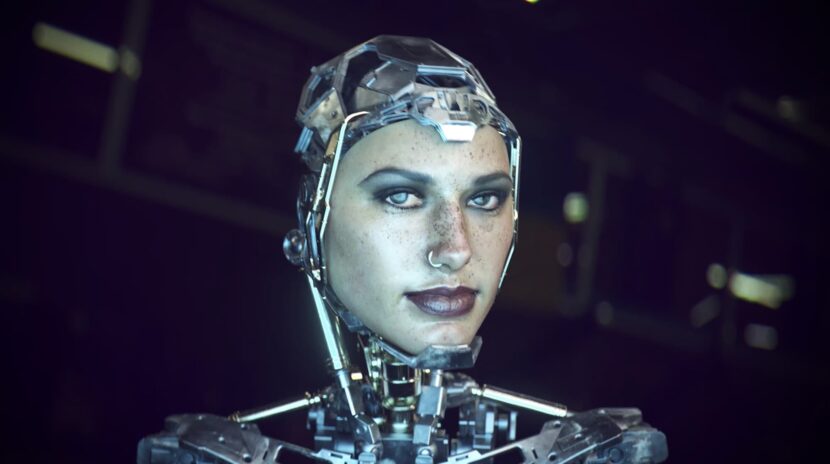SYNTHia is a virtual talent, “creative spirit, shower singer, truth seeker” created by The-Artery in NY. ‘She’ says that her goal “is to bring entertainment and enlightenment and if not both, then at least one at a time.” She is a self confessed ex-AI assistant who is moving to Hollywood to build a career.
fxguide interfaced with The-Artery founder & CCO Vico Sharabani to discuss SYNTHia. Sharabani is himself a VFX artist, one of the most notable Flame artists in the world, winner of the first-ever Autodesk Flame Award, and a good friend to fxguide since it started. He is heavily involved in the management of projects across creative, production, and technical.
Digital Influencers, NFT, and other digital innovations are a bright frontier for digital artists. The-Artery is a highly effective design, animation, and experience media company in New York, known for its innovative high-end VFX and impactful campaign solutions. The Artery was founded in 2012 and it is a full-service creative studio that does high-end visual content for brands, feature films, commercials, digital experiences, and art installations. Their clients include HBO, Netflix, Hulu, Nike, Paramount Pictures, Warner Bros., Focus Features, Pepsi, 20th Century Fox, MTV, Mercedes, Google, and Coca-Cola.
fxguide: Why did The-Artery seek to make SYNTHia?
VS: The approach we’re taking is to build a one-of-a-kind virtual talent. We’re building a social personality, a musical act, and a model with NFT opportunities. Many people draw parallels to a modern version of Max Headroom, which we see as a compliment. We’ve wanted to do this for the last ten years, and now the technology, as well as the social platforms allow for such a vision to manifest.
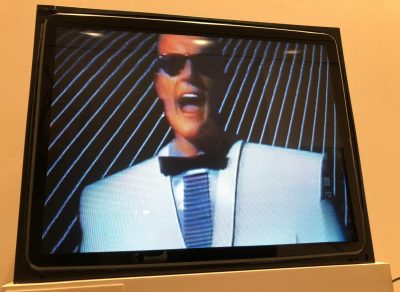
fxguide: While she presents as artificial, she offers a real point of view. Does this mean people, especially younger people, don’t rate full digital human realism over an authentic experience?
VS: It’s important to understand the category. The execution of SYNTHia is quite ambitious when compared to virtual talent we see in the social media space. There are multiple components to every innovation. Years ago, the home theatre business, for example, grew to bigger and bigger televisions and even bigger speakers. The quality was most important then — people even had gold cables, right? But then everything became formatted for your phone because the immediacy of content was taking precedence over the quality. In our particular case, photorealism is secondary to what people are experiencing right now in the VR, Metaverse, crypto entities, etc., spaces. There’s a shift to a landscape that is more important than photorealism. Playing virtually with your friends in 8-bit worlds like Minecraft is a different engagement than how we judge the execution in traditional media. That’s not to say that it’s gone; the quality and complexity will come back quickly, but the immediate thing is definitely not about photorealism — it’s about the experience.
fxguide: Clearly SYNTHia is not real. What makes a character such as SYNTHia resonate with people?
VS: SYNTHia is super curious about human behavior, but unlike human beings, she has no judgment nor preferences for any one group. So when she asks you a question, she’s not like an interviewer or a journalist trying to prove you right or wrong. She is sort of just allowing you to be there. Everything that she does has a certain component of entertainment and enlightenment, so that’s basically the core of who and where the personality is.
fxguide: I assume her voice is synthetic; have we reached a point that in terms of visual and audio, there is enough fidelity for a meaningful personality, and unlike the film industry, things other than photorealism matter more to, say, a TikTok audience?
VS: Yes, her voice is generated by text-to-speech. We hope that, in the future, there will be some automation, real-time capabilities, and AI integration. During this first stage, we define her personality using text-to-speech and create the animation. The second stage is to RND voice to animation, which we are currently testing, and the third stage is to optimize real-time capabilities. The final steps are the AI actually driving the content in real-time.
fxguide: Is her personality based on any real person?
VS: SYNTHia’s look and personality aren’t based on any one real person. We actually try to negate how a human with an opinion would look at a situation and write from there. On the other hand, SYNTHia is like a baby when it comes to social media and is learning and growing from every interaction.
fxguide: How do you present her with a single ‘voice’ or consistent persona? Surely it is her attitude as much as her rendering that connects with an audience?
VS: We know that SYNTHia will continue to evolve and adopt a certain attitude that is sharper, but, currently, she is reflective of human responses and experiences as we are watching the interest in her grow. This is why her posts and reactions are being carefully considered by our team that manages her profile now. Since we now know there is interest, we are increasing her post rate on social media and having a conversation about the full extent of her capabilities.
fxguide: I am fascinated that she lip-syncs to tracks on TikTok- will we see a lot more of this? How important is TikTok to the Virtual Influencer space?
VS: I think TikTok is a great platform to engage with large audiences, see what works, and get those statistics. It was the platform we started on, and we could see the engagement and interest almost immediately. Now we’re expanding to other platforms, so you’ll see her on Twitter, you’ll see an increased presence on Instagram, you’ll see Spotify in the next couple of weeks. So, yeah, TikTok is a fantastic place for us to play, but we have our sights on broader horizons.
fxguide: What were the design considerations to make her only work in a medium closeup, (we have only ever seen her from the chest up). Is there a full-body version?
VS: There is a full-body version in the works. To be honest, we’ve gone back and forth with design choices for some time and eventually landed where we are to avoid a descriptive female body. We don’t think it’s right to have a Lara Croft-type of body in 2021. It’s an odd type of male-designed character, and we don’t want that. Actually, the majority of our audience is female, and we’re very conscious about the message SYNTHia delivers and of her physical appearance. We started working with fashion designers to have clothes that she can wear to avoid the type of bodysuits that you’re used to seeing on superheroes or androids.
fxguide: Can brands hope to master such youth spaces? Isn’t there a very thin line between a brand trying to do something like this well, and it failing and seeming – cringe / awkward? Are you aiming to both be a source for the imagery and the zeitgeist? SYNTHia lands and scores so well, but it can be a tightrope walk to pull off, can’t it?
VS: SYNTHia is for any demographic, not just for the youth market. Of course, there is the uncanny valley. SYNTHia jokes that she started similar to a Siri or Alexa type, and now she’s done answering what the temperature is outside or to play music — she’s off to Hollywood! We’re playing with what people consider the uncanny valley, and with her humor, we’re not afraid of that.
fxguide: For your company, is SYNTHia a promotion, research, or an effort to show potential clients what is possible?
VS: For now, SYNTHia is a client of ours who’s generating interest and attention around The-Artery’s capabilities, but the long-term vision is for autonomy.

